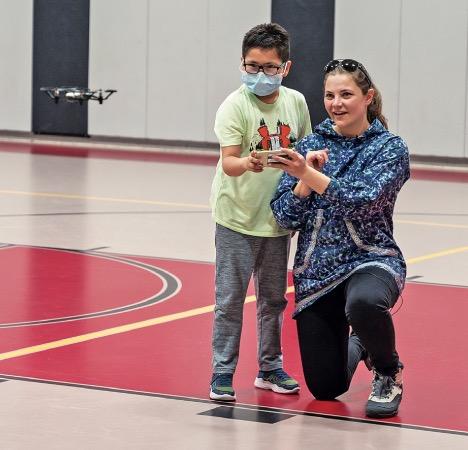Body
Image

Place-based Education in a Drone Related Co-production Project for Alaska Native Learners
This project uses tech and a place-based, community-engaged approach to examine attitudes toward STEM. Initially focused on student, teacher and community attitudes and behaviors, pandemic-related timeline and implementation adjustments provided an opportunity to also examine how we engaged with each other and with community members in three rural Alaska sites. Questions: How does a place-based STEM curriculum engage students, educators and communities to envision/apply STEM in different contexts? (a) How does training & collaboration develop educator competence/confidence in developing a culturally responsive STEM praxis? (b) How do Elders & communities exercise self-determination and ethos of place-based education in guiding project-based STEM curriculum development? c) How do interdisciplinary teams collaborate, communicate, and learn from one another when working on a community engagement project? Conclusion: Alaska is a rich context for place-based interventions. However, care must be taken throughout the life of a project to ensure community perspectives and concerns are identified, acknowledged and prioritized. Observations and interviews with participants have led to improved understandings about the value of authenticity in teamwork; how students and their teachers respond to place-based, technology-rich programs; and how Indigenous and rural communities embrace projects blending local knowledge and university science through co-production methods.
Pillar 1: Innovative Use of Technologies in Learning and Teaching
Students apply drone technology in understanding issues of local importance to the Tribe and the community.
Pillar 2: Partnerships for Career and Workforce Preparation.
Community partners participate in career explorations and visit classrooms to discuss how drones are used locally, and to share information about drone-related jobs.
Pillar 3: Strategies for Equity in STEM Education
Tribal priorities, approvals were foregrounded throughout the process; work was always and only done in full collaboration with Tribes. Local advisors chosen by the Tribe were interviewed, their wisdom was included in products. Products were developed and revised iteratively in collaboration with community, not published until approved by local advisors. Cultural values were identified, practices were respected, language was included. Local, cultural and university science were interwoven as complementary data.

Discipline(s)
Environmental sciences
Geosciences
Interdisciplinary
Life sciences
Target Gradespan(s)
Elementary school (K-5)
Target Participant(s)
Youth / students
Educators
American Indian/Alaska Native participants
Students eligible for free lunch or reduced-price lunch
Project Setting(s)
Formal Education
Category
Developing and Testing Innovations (DTI)
Exploring Theory and Design Principles (ETD)
Scaling, Expanding, and Iterating Innovations (SEI)
Strategies